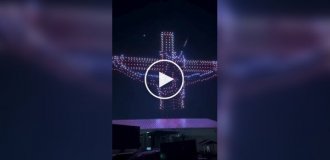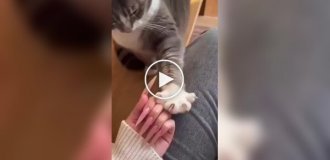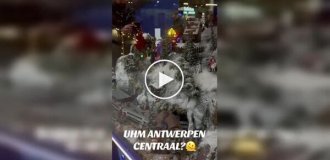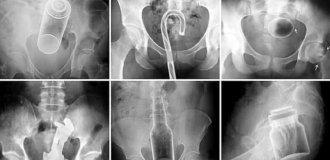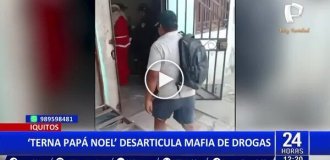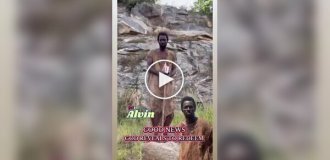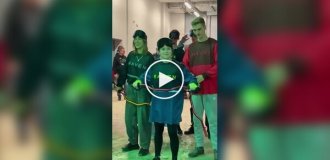The disappearance and tragic death of tourists Lisanne Fron and Chris Cremers (43 photos)
This post will tell the mysterious story of the disappearance of two tourists from the Netherlands who went to Latin America. Lisanne Fron and Chris Cremers decided to visit Panama to get to know the culture of this country and the traditions of the local people, but disappeared without a trace in the jungle. After a long search, the girls were finally found, but, unfortunately, it was too late.
Further words from the author:
Two students from the small Dutch town of Amersfoort, Chris Cremers and Lisanne Fron, have long wanted to visit Latin America. Their choice ultimately fell on Panama. They planned a six-week trip: the first two weeks they would live in the resort province of Bocas del Toro, and then for the remaining four weeks they would go inland to the small town of Boquette, where there was a Spanish language school aimed at tourists from Europe.
Spanish training was supposed to take place in practice mode, in other words, the girls had to perform various social work with local schoolchildren. On February 15, 2014, the girlfriends will arrive at Amsterdam Schiphol Airport. The parents who saw off the girls will take a photo of their children before the long separation. Lisanne and Chris will go through customs control and disappear behind the doors of the waiting room. Their parents won't see them again.

Little is known about the girls themselves. Chris Cremers was to become an art critic upon graduation. She was an open, sociable person. She paid for the trip to Panama from her own savings, saving for it for at least six months, working as a waitress in a local restaurant, where she met Lisanne. She was a fan of Red Hot Chili Peppers.
Lisanne studied to become a psychologist. She dreamed of working abroad, in southern countries, which in turn required knowledge of other languages, especially Spanish. The trip to Panama was partly a gift from my parents, a kind of advance payment for my future diploma. With a height of 184 cm, Lisanne successfully played for the student volleyball team. Favorite music: Coldplay
Chris and Lisanne will spend the first two weeks of the trip as planned in Bocas del Toro

Lisanne posed for photos with the parrot and wrote rave reviews about Panama on social media.

Chris posted photos from Bocas on her Facebook page, with the standard resort theme: beach, sea, starfish.

On the twenty-ninth of March, as planned, Chris and Lisanne move to Bocquete.

The town of Boquette. Photo from the top of the mountain.

Despite the fact that Boquete is located far from the sea, it is still a major tourist center in Panama. The main attraction is the more than three-kilometer mountain of volcanic origin, Baru. In good weather, Panama's highest peak is visible from both the Atlantic and Pacific Oceans. Although Baru is a fairly flat mountain, climbing to a three-kilometer height is naturally associated with certain difficulties, so most of the hiking routes in the vicinity of Bochette are not laid on Baru, but on nearby hills and hills. There are also several observation platforms (in Spanish they are called the sonorous word “Mirador”) with views of the city and the volcano, which last erupted in 1550.

And of course, not a single tourist who finds himself in Central America can pass up the opportunity to take at least one look at the jungle. Formally, they begin immediately after leaving Boquette; in fact, the town itself lies in the middle of the jungle, but on the slopes from the city side, the jungle is quite civilized, one might even say “sham”, with hiking trails, or even just small roadside cafes, for the convenience of tired tourists. This is what the jungle looks like three kilometers from Boquette.

But in order to appreciate the true beauty of the tropical forest, you need to go to the mountain slopes outside the city. 6-7 kilometers from the city, the jungle already looks like this:

The first surprise awaits the girls in Boquette: the Spanish course has been postponed until April 8th. Thus, Lisanne and Chris had a whole week of unplanned free time. It was decided to devote this time to exploring local attractions and surrounding areas. Fortunately, the choice of one-day tourist routes around Boquette is truly impressive.
Starting the story directly about the most criminal component of this story, it should of course be said that the attempts of the media and researchers to clearly reconstruct the events of March 31st and April 1st ended in complete failure, due to the complete discrepancy between the testimony and some of the facts about which it will become known. known a little later. But there is nowhere to go, so the events of these days will be presented in exactly the same sequence as they sounded in the reports of the Panamanian police and the press.
March 29, 2014, Saturday.
Lisanne and Chris arrive in Bochette. By prior arrangement, they rent a room in the annex of the house from a woman named Miriam. She rents out a room under a contract with a Spanish language school. The room apparently has a separate entrance. Girls receive two pairs of keys.
March 30, 2014, Sunday
After breakfast together, the girls leave to explore the city and return in the evening. Miriam did not notice anything unusual or the presence of third parties with the girls.
March 31, 2014, Monday
The girls go to the language school early in the morning, where they receive news that practice will begin a week later than planned. According to some accounts, the girls, especially Lisanne, became upset. At the school, they talk with the school manager and then with the local guide, Feliciano Gonzalez. They order an escort from him for two walking routes. On Wednesday to the so-called “strawberry farm” located at the foot of the Baru volcano, and on Saturday directly to the volcano itself.
On the same day, the girls have last contact with their parents via Whatsapp. “We’re fine. We’ll talk later,” was Lisanne’s last message.
April 1, 2014, Tuesday
9.00-11.00
The girls are seen in a cafe near the school, in the company of two young men
13.00
According to guide Feliciano Gonzalez, at this time the girls leave the Spanish language school. Subsequently, Feliciano repeated more than once that he was obviously the last person to see the girls in Boquette
13.30-13.40
Taxi driver Leonardo Mastino sees girls voting on the road, not far from the Spanish language school. He gives them a five-dollar ride to the start of the El Pianisto hiking trail.
Before 15.00
Giovani, the owner of the cafe located at the start of El Piano, sees the girls. They ask him some questions about the route.
15.00-15.30
One of the workers (obviously a cafe) sees the girls leaving along the route and gives them his dog “Blue” as a guide. According to the cafe owner's wife, Doris, Blue will be back in an hour. One.
17.00?
A certain Pedro Capon, perhaps the owner of one of the cafes or shops near El Pianista, sees two girls returning from the route. They ask him how they can return to the city. He shows them a place where they can catch a taxi or take a bus. But in which direction the girls went, Pedro did not see.
17.00?
An American living near the start of El Piano sees two girls returning from the route. They are talking with the owner of one of the cafes, apparently asking how to get into the city
As many who have visited Panama say, using dogs as guides is a common practice. If tourists lose their orientation and the correct direction, the four-legged guide can give the command “Home!” and he will lead the lost back to the city without any problems. This is perhaps the main witness in this case, a husky named Blue:

Guide Feliciano Gonzalez. He repeatedly criticized the local police for the insufficient activity of search activities, and after the disappearance of the girls, he gathered a small volunteer detachment from local Indians and went into the jungle himself. In addition, in one of his interviews, he told the Dutch press that in the jungle, on the other side of the mountains, there are many abandoned huts and dugouts that are not marked anywhere on the maps. Whether anyone lives there or not is unknown even to him.

Taxi driver Leonardo Arturo Gonzalez Martinez, who allegedly gave the girls a lift on April 1 before the start of El Piano, will die a year after the events we describe. Not suspicious, but a very ridiculous death. A young thirty-four-year-old man will feel ill, fall into a pond and drown.

On April 2, Chris and Lisanne had an appointment with Feliciano Gonzalez. His services have already been paid for. The girls did not show up for the scheduled meeting. During the day, the guide will make inquiries at the Spanish language school and at the place of residence of the family where the girls are staying. And by the evening of the same day he will report his suspicions to the police. On the morning of April 3, the Panama police will begin search operations. Searches will be carried out at the Spanish language school and at the apartment where the girls lived. In the room you will find two laptops belonging to Chris and Lisanne. After studying the data, the police will establish that early in the morning of April 1, the girls made many requests on Internet search engines about hiking trails in the Boquette area. They were especially interested in the El Pianisto route.


The search and rescue operation begins on the same day.
By April 5, police and rescuers will complete their search at El Pianisto and nearby tourist routes. And they go beyond them, to the trails located on the outer slopes of the mountains around Boquette. The first helicopter takes off into the air, so far not so much for a search as for coordinating rescue teams. The targeting of girls goes to neighboring Costa Rica.
On April 7, one of the largest international tour operators offering vacations in Panama, Lonely Planet, strongly recommends that tourists refrain from solo trips outside the observation decks, drawing attention to the increasing incidence of robbery.
On April 8, the search begins with the help of helicopters. According to Panama police, the search operation for Chris and Lisanne was the largest in the history of this country. On April 10th, Chris's parents arrive in Panama. The active part of the operation will be completed by April 14th. All search efforts were unsuccessful. Neither the girls themselves, nor their remains, nor traces of blood were found. Typically left behind by the lost, various markers on trees or scratched arrows on rocks were also not found. A map from the Panamanian Police search headquarters shows what work was done during these search days:

On April 30, a reward of $30,000 was set for information about the whereabouts of Chris and Lisanne. Later, one of the television channels of Panamanian television will add another ten thousand to this amount.

At the end of May, a Dutch police detachment consisting of eighteen employees and twelve dogs of various profiles flies out to help their Panamanian colleagues. The first three days of their stay in Panama, the Dutch police team focused on inspecting residential premises in Boquette and around El Piano. It is clear that the police did not have any legal rights to such actions, however, according to the police: “the majority of local residents with whom they dealt agreed to inspect their premises.”
Naturally, one of the main versions of the disappearance of the girls was the assumption that Chris and Lisanne could simply get lost. The El Pianisto route began on the northern outskirts of Boquette, at an altitude of 1270 meters above sea level. For the first one and a half kilometers, the route passes along coffee plantations, small groves, and through a fairly calm landscape. The ascent on this section of the route is only about 200 meters. Further, the trail narrows, the route becomes a little more “wild”, rising to a height of approximately 500 meters and after four and a half kilometers in length, it ends with a small observation deck, expressed in Spanish as a “mirador”, at an altitude of 1890 meters above sea level. At this stage, so to speak, the official route indicated in Google earth and some “conservative” guidebooks ends. The trail continues further, going down the mountainside to the so-called “Caribbean side” of Panama. This unofficial part of the route, in different sources, is called slightly differently, but approximately translated into Russian it can be designated as “Caribbean Descent”. It leads to a sparsely populated area under autonomous Indian administration, with the complex name Ngobe-Buglé. The area is inhabited by two Indian tribes, one of them is called Ngobe, and the second, as you probably already guessed, Bugle. The terrain into which the Caribbean Descent leads is initially somewhat rugged and then mostly flat, divided by the Rio Caldera River and its tributary called Culebra.
On the map it looks something like this:

For a long time it seemed that the details in the story of the disappearance of the girls would remain forever unclear. However, two and a half months later, on June 14, 2014, there was an unexpected twist in this story. On this day, a local Indian living on the “Caribbean side”, while working in a small rice field, discovered a blue backpack in the shallow bed of a nearby river. The contents of the backpack were as follows:
- Foreign passport in the name of Lisanne Fron
-Insurance medical card in the name of Chris Kremers (according to some sources, both girls’ cards)
- 83 US dollars
- Two pairs of cheap sunglasses
- Two mobile phones
- Two bras
- Water bottle
- Canon camera.


Judging by the initial press reports, the position and condition of the backpack was such that it was not possible to clearly determine whether the backpack had been left in this place or whether it had been carried by the current.
By the way, photographs of the girls’ belongings showed how different the approach to covering a criminal story in the media can be. The fact that these photographs appeared in the Panamanian press without any consent from the girls' parents caused violent protests from the Dutch justice system. The Panamanian side did not understand the objections of their European colleagues, declaring that such cooperation between the investigation and the media is an absolutely normal practice. True, subsequently, in many Panamanian and Dutch newspapers there was information that this photograph was not taken by the police at all, but by the Indian himself, at home, immediately after he discovered this find.
As a result of various examinations of the found items, it will be established:
- The DNA of two unknown women will be found on the backpack itself, as well as two slightly incomplete “male” DNA. Nevertheless, one of the men can be identified, but the police will not say who it is and how he left his genetic imprint on the girls’ backpack.
-According to official data, “more than a dozen” different fingerprints will be found on the girls’ mobile phones. According to unofficial estimates - thirty-six. Three of the fingerprints found on the phones will also be found on the camera. One of these "repeating fingerprints" will arouse the suspicion of the Panamanian police and will be entered into the fingerprint database of wanted criminals.
-The police did not report anything about the condition and technical serviceability of the mobile phones and cameras. However, the data from mobile phones and cameras was subsequently decrypted and published. Most likely, the camera's SD card was slightly damaged.
-At the place where the backpack was found, the police will take six samples to extract DNA. Five tests will not give any result. The DNA of the sixth sample belonged to an employee of the Institute of Forensic Science, where this examination was carried out.
-Remnants of soil and plant material will be found on the backpack. According to Dutch police, this material was never compared with the soil composition of the area in which the backpack was found.
A new search operation was launched along the Culebra riverbed. During the second search operation the following were discovered:
- Black boot. Discovered June 16. It belonged to Lisanne. The shoe was located near the river bed, behind a tree. Part of Lisanne's leg was found in the boot. According to police, it was separated as a result of "natural processes." Subsequently, on August 29, not far from this place, smaller bone remains will be found on which skin will be found. The leather material showed the first stage of decomposition, leading police to conclude that it had been stored in the shade, in a cool place, at low temperatures. Some black dots and many holes were found on the skin, apparently left by insects, as well as some red stripes that were traces of hemoglobin from the muscles.
-Hip bone. More precisely, part of it. She was found nearby, also on June 16th. Subsequent DNA testing revealed that the bone belonged to Chris Cremers. The bones showed no signs of decomposition. Police assumed that the bone had been chewed off by predators, although no obvious signs of animal fangs were found on it.
-Blue shoe. It was discovered on June 18. Police initially believed the shoe belonged to Chris. However, no evidence of this, in the form of DNA examinations or other studies, was provided. Moreover, after deciphering the photographic material, it will become clear that Chris was wearing different shoes that day.
-Denim shorts belonged to Chris. They were found at the end of June. They lay on a small rock near the mouth of two rivers. There were no traces of blood or tears on the shorts.

On August 3, more than fifteen kilometers (as the crow flies) from the start of El Piano, new bone remains will be discovered. Most of them belonged to animals, but one fragment of bone material turned out to be the rib of Chris Cremers. Even during a visual inspection, experts noticed the unusual completely white color of the bone. During subsequent analysis, a large amount of phosphates were found on the Chris Cremers rib, as a result of which the rib received this color.

The complexity of the landscape, the area where the things and remains of the girls were found can be judged by the fact that the journey alone, of the investigator of the Panamanian Prosecutor's Office Bazaida Pitti, for the found skeletal remains of Chris Cremers, lasted about ten hours, and at the end of this “business trip” she needed medical care due to dehydration of the body.

After these finds, the Panama police voiced one version according to which the girls could have become victims of predators. The main suspect looked like this:

However, Puma was not the only suspect from the Panamanian fauna. Many local media noted that reptiles could pose a much greater danger to the girls who went into the jungle. For example, the Bushmaster is the largest venomous snake in South and Central America. Some individuals can reach a length of four meters. Despite its impressive size, the Bushmaster is a very “shy” snake, avoiding meeting people and settling, as a rule, far from its habitat. But many of its younger brothers of the viper family are more aggressive towards people.

The police naturally placed their main hopes that the cause of death of the girls would be established on data from mobile phones and a camera found in the backpack. These hopes were not destined to come true. On the contrary, photographs and printouts of mobile data will completely confuse this story, turning it into one of the most mysterious crime stories of our time.
But before moving on, a few words about the reliability of the data that will be discussed below. Firstly, it appears that the camera’s SD card was slightly damaged by being in water for a long time or for some other reason. Therefore, some police data had to be restored. Secondly, after studying the photographic material, the police handed over the photographs to the girls’ parents and the latter, naturally, did not want to make a photo gallery from this material, publishing only some of the photographs. Well, thirdly, the time and serial numbers of the photographs were published only in the Panamanian press, and were partially confirmed only by the girls’ parents. But the data from the mobile phones of Chris and Lizan was published by newspapers around the world, the Dutch police referred to them, and therefore the likelihood of an error in them is minimal.
So let's fast forward again to April 1, 2014...
The timing of the photographs contradicted all eyewitness testimony. According to the photographic material, the girls began their journey to El Pianisto not after 14.00, but much earlier, approximately at 10.45.
The first published photo of IMG_491 was taken at 12:03:08, apparently somewhere halfway to the mirador. In the photo is Chris, in her hands she is holding an object that looks like a plastic bottle, which will later be found in a backpack.

The next published photo is IMG_493, taken at 12:22:45, by this time the girls had already been at El Piano for about two hours. Apparently, this walking route did not evoke any special emotions in them, as we can see they took only three photographs during the two-hour hike. The photograph shows one of the canyons, “barranco” in Spanish, located somewhere in the immediate vicinity of the observation deck. This is apparently one of the restored photographs. Its place in the general chronology causes heated debate among researchers of this case. The fact is that in the parents’ video there are no canyons up to the mirador (later, parents Chris and Lisanne will walk along this route, filming the path with a video camera). In addition, many people notice that the photo is slightly blurry, as if it was taken on the run.

The next photo is IMG_499, taken at 13:01:44. Everything is simple here - Lisanne is on the mirador.

IMG_500, taken at 13:01:50. 6 seconds after the previous photo, Lisanne is photographed overlooking the opposite side of the mirador. The differences in cloudiness in both photographs are frankly surprising.

IMG_XXX, around 13:00, exact time unknown. The only photo taken on a mobile phone. Or the only one published. Chris on mirador.

IMG_505, taken at 13:20:33. The beginning of the Caribbean Descent. Chris in the steering wheel. The number of photographs increases sharply. Based on the numbering and time, it is clear that in 19 minutes the girls took 5 photos.

IMG_507, taken at 13:54:50. This is the so-called "Kverbada". Crossing the stream. There are two of them on the Caribbean Descent. This is the first one.

IMG_508, made 13:54:58. Eight seconds after the previous photo, Chris is photographed on the other side of the stream. Both the police and the girls’ parents have confirmed more than once that this is the last photograph taken by the girls on April 1st.

What the girls did over the next almost two hours is unknown. At 16:39 Chris will dial 112 on his mobile. This is the emergency number for the rescue service in Holland and many other European countries. Twelve minutes later, at 16:51, Lisanne will follow her friend’s example, also dialing 112 on her Samsung.
The telephone number of the rescue service in Panama is 911. However, the fact that the girls tried to call the more familiar number 112 for them was, in principle, not an error, since when dialing this number, cell phones are automatically redirected to the rescue service number of the country in which the owner is located phone at the moment. The real problem was that in the place where the girls were calling, there was obviously no network coverage and neither Lisanne nor Chris could reach the rescue service. Moreover, that day they made no further attempts to call.
April 2nd This time, at 06:58, Lisanne was the first to try to call. Chris makes his attempt at 08:14. and no longer uses his iPhone that day. Lisanne tries to call again at 10:53 and 13:56. This time she not only dials 112, but also tries to call 911 directly.
April 3 At 09:33 Chris tries to contact 911 again. However, the network coverage was insufficient to establish communication this time. This was the last call to 911. During the day, the girls turned on their phones a couple more times, but made no attempts to call or send a text message.
On April 4th, Chris turns on his mobile phone twice, at 10:16 and 13:42. There was no activity recorded on Lisanne's phone that day.
April 5th Lisanne's phone turns on at night, at 04:50 and remains on for 10 minutes, as a result of which it is completely discharged and turns off. Chris's phone turns on twice at 10:50 and 13:37.
April 6th At 10:26 Chris's phone turns on again, but for the first time, the phone that turned on does not dial the PIN. Next switch on at 13:37.
According to information broadcast on the RTL television channel, from April 7 to April 10, Chris's phone was turned on a total of 77 times.
On the eleventh of April, Chris's phone will be turned on first at 10:51, again without a pin. And then at 11:56 and about an hour later it turns off.
Weather conditions were approximately the same for eleven days. During the day, the thermometer rose to 30-36 degrees, and at night it dropped to 24-20 degrees Celsius. The only torrential downpour with thunderstorms began on the evening of April 3, at 5 p.m., and ended on the night of the fourth, at about two o’clock. There was also rain and thunderstorms on April 8th, but not for long, from 18:00 to 19:00. On other days no precipitation was observed.
And on the night of April 8th, someone suddenly turns on the camera and takes exactly 90 pictures with it within three hours. That is, on average, one photo per two minutes. Unfortunately, 87 of them will be taken in complete darkness, without flash. As the Dutch police will state, despite the fact that the photographs were certainly taken with an open lens, it is impossible to see or recognize anything in them. Of the three photographs taken with flash, only two will be published initially.
This is IMG_542, at 01:38:12

The next “resulting” photo is IMG_550, taken at 01:39:54

In February 2015, Dutch police will publish a report on the investigation they carried out into the deaths of Lisanne Frohn and Chris Cremers. The point of the report is, of course, not an attempt to prove one or another version of the girls’ deaths, but rather an attempt to determine the most likely cause. So, according to the Dutch police, the girls died as a result of an accident: “First of all, the geographical conditions on the last section of the route “El Pianisto” (meaning the “Caribbean descent”, and the last kilometers) show that an accident is the most possible cause of subsequent death Lisanne and Chris.
The opinions of experts on this report were naturally completely polar, and many subjected it to serious criticism. A word from Panamanian criminologist Octavio Calderon: “There are no facts at all on the basis of which we can say that the girls were near the river. Two bones found, of two different people, from two different parts of the body, in different parts of the river, rather indicate that someone put them there...”
Almost six months after this, Chris Kremers’ parents finally decided to show the last, “third” photograph. The photograph was shown in one of the Dutch television programs.

Map with localization of finds and photographs taken.

The remains of the girls were handed over to their parents and buried in Holland.


This is where the “official” part of the post ends, and then we will try to sort out the inconsistencies and incomprehensible points.
1) Why does the timing of the photographs contradict all the testimony?
Officially, neither the Panamanian nor the Dutch police give an answer to this question. Doesn't match, that's all.
Knowing that the journey to the “mirador” takes at least 2 hours, and the girls took pictures on it at noon, or so, it means that they set out on the route at about 10 o’clock in the morning. Why do witnesses claim that they saw them leaving for the route around 14:00-14:30? And at about 17:00, at least two people claim that they returned from the route, although this is impossible, if only on the basis that at approximately this time there was an attempt to call the rescue service from phones located on the other side of the “mirador”, on "Caribbean descent".
Did the witnesses confuse them with other European girls? Or are they deliberately deceiving, misleading the investigation? But again, why?
The more people are deceived and participate in collusion (and here there are about six people), the greater the likelihood of letting it slip, or allowing inconsistencies with the testimony of another person. If there was intent and there was a criminal background, then it would be much easier to say that “I didn’t see anything and I didn’t hear anything.”
In fact, although the official version says that the girls died as a result of an accident, crime is more than possible here. In Panama, as in many Central American countries, in addition to the drug trade, the sex slave trade is also thriving. Many girls are kidnapped or tricked into this area. It is quite possible that interested parties could pay attention to foreign girls who are different from local ones.
2) Why did the girls only call the rescue service, without ever trying to reach their family or friends?
On the one hand, there is a logical explanation that, seeing the futility of trying to call 911 and 112, they did not want to waste time charging their phones. But it is also puzzling that not a single attempt was made to send SMS to the same friends or parents, especially in the early days, when the phones did not turn off and the battery power was not yet saved. There is always a possibility (and not a small one) when, in the absence of a network, an SMS “hangs” on sending, and then, when a minimal signal is received, it is still sent. Moreover, it is sent even when it is impossible to get through. However, the girls might not have known about this if they lived in a place where cellular communication was always stable.
Also, for some reason, there are no phone records or photographs of the incident. For at least eleven days the girls were alive (one for sure, in any case), and not a single phone contains a record of what happened (neither voice nor text), and not a single photograph that sheds light on what happened. Neither on the phone nor on the camera.
3) Time to turn on the phones and try to call.
For several days, from the second to the sixth of April, the girls turn on their phones at the same time intervals - between 10-11 and 13-14.
Where does such selectivity and timing come from?
By the way, iPhone Chris lasted 11 days. A very good time for a modern smartphone, even taking into account the fact that part of the time it was turned off. When turned on, the mobile phone tries to find a network, and if there is none, or it is weak, a lot of energy is spent searching and maintaining the network.

4) Chris shorts.
The shorts found during the search operation added another mystery to this case. According to the Panamanian police report, the shorts were lying neatly on a large rock near a creek bed. There were no signs of ruptures or any other damage on them. The police also said that no traces of blood were found on them.
Actually, the question is: why take off your shorts in the jungle and leave them on a rock?
Versions put forward by forum users (both Russian and Dutch):
a) The shorts were stained with mud, they were taken off to wash, they were laid to dry on a stone, but something scared the girls, they ran away and did not return.
- It’s quite possible, but it’s unlikely that soiled shorts will be washed in such a situation. Well, they got dirty, so what? This is not a city where everyone is looking at you. In the jungle, values and priorities are somewhat different.
Alternatively, the shorts were not stained with dirt, but the owner began to have “menstrual periods.” In such a situation, washing is quite logical, but the police officially stated that no traces of blood were found on them, and it is impossible to wash off blood in plain water of a mountain stream, without detergents. However, the examination easily determines the nature of the blood, and the investigation could have bashfully kept silent about such an intimate fact, considering it not relevant to the case.
b) The girls wanted to swim in the stream, undressed, but something scared the girls, they ran away and did not return.
“You can’t really swim in that stream.” This is a stream, not a river. He's small. You can drink from it, wash your hands, but swim... Moreover, why then were there only shorts left? What about the rest of the clothes? In addition to shorts, Chris was also wearing a T-shirt.
c) Chris took off her shorts because she was hot and decided to get rid of them.
- It’s hard to imagine a person willingly walking in his underwear through the jungle. Moreover, it was more rational to put the shorts in the backpack that the girls had with them.
d) The shorts were removed because Chris was injured.
- Why then carefully lay them out on the stone? Wouldn't it be easier to put them in a backpack? Moreover, if the injury had been open, there would have been blood on the shorts. If it was closed (fracture or dislocation of the hip joint), then Chris would not have gone far from the shorts. The body would have been found nearby.
5) The remains of girls found at a considerable distance from each other, and their condition.
a) Lisanne's boot. The shoe was located near the river bed, behind a tree. Part of a leg was found in the boot. According to police, it was separated as a result of "natural processes." Subsequently, not far from this place, smaller bone remains will be found (it is not specified which ones), on which skin will be found. The leather material showed the first stage of decomposition, leading police to conclude that it had been stored in the shade, in a cool place, at low temperatures.
These findings speak in favor of the criminal component of the incident. As a result of what “natural” processes could the foot be separated from the lower leg? The ligaments will not rot even in such a hot climate in three months. Also, the police do not say anything about the marks that must have remained on the joint during separation, as a result of which the nature of the injury would have been clear. And how does this relate to the discovery made very close by: “small bone remains” on which the skin was preserved, which was in the first stage of decomposition? How can a leg decompose, even to the point of destruction of the joint, while the skin remains virtually intact? In what refrigerator were these bone remains located, and who brought them to the shoe and planted them?
b) Part of Chris's hip bone, not far from Lisanne's boot. The bones showed no signs of decomposition. Police assumed that the bone had been chewed off by predators, although no obvious signs of animal fangs were found on it.
The police did not put forward any versions (at least officially) of how the pelvic bone could burst, and what the nature of the fracture line was, from which one could judge the nature of the injury. To break the pelvic bone during life, you had to fall from a very great height, and extremely unsuccessfully, on your back or side. The version about gnawing by predators does not stand up to criticism. Predators of the cat family (puma), do not gnaw bones. This could have been done by a wolf or a hyena, but they are not found in this area. And, according to the police, there were no traces of teeth on the bone.
If we assume that this place was still the place where the girls died, then how could their backpack end up much further than this place, downstream of the stream? Who brought it there?
c) On the third of August, more than fifteen kilometers (as the crow flies) from the start of El Piano, the Chris Cremers rib will be discovered. Even during a visual inspection, experts noticed the completely white color of the bone. During subsequent analysis, a large amount of phosphates were found on the rib, as a result of which the rib received this color.
Where did the phosphates on the rib come from? According to the police, it was in the stomach of a predator. But firstly, what kind of predator was this that could swallow a rib whole? and secondly, how was this rib able to leave the stomach without being digested and pass through the intestinal tract? And the hydrochloric acid in the stomach does not precipitate any phosphates on the surface of the bone, but, on the contrary, dissolves inorganics, as a result of which the bone becomes soft and is digested...
6) A backpack found in a stream bed with things.
Some surprise is caused by its good preservation, and the safety of the things contained in it. It is also unclear whether the girls themselves left him here, or whether he swam with the current (during rain, the water could rise, and theoretically, a backpack left above could be brought to this place by the stream), but if he was carried by a mountain stream, throwing him against the stones, then he the safety is amazing. If the girls left it, then how did their remains end up upstream? So they came back?
It’s also strange that the phones and camera were well preserved. And in general, the very fact of their presence in the backpack is surprising. By the tragic end of the eleventh of April, the last time Chris's iPhone was turned on, the one who turned it on (Chris or Lisanne) was clearly already in a state close to insane (as indicated by 77 turns on/off of the phone). A person in such a state will clearly not carefully pack things into a backpack.
Jack London has a very powerful story, "The Love of Life." It very well describes the behavior and state of a person desperately fighting for his life, and the change in his preferences, values and priorities in the process of struggle. Although the story is artistic, everything is described very reliably, and on the verge of death, it is unlikely that the girl will pack her phones and camera in her backpack, especially since there is no information on them that can shed light on what happened.
7) Night photos on April 8.
A series of 87 photographs taken with a camera in complete darkness without a flash, and three with a flash.
There are different versions of the origin of these photos, such as someone falling asleep with his head on a backpack with a camera, and periodically pressing the shutter button, and an attempt to scare away a predator in the dark with the sound of the shutter.
But if the camera was in a backpack, and took photos there on its own from random clicks, then how did it later end up “on the street” after a series of these pictures, where three more pictures were taken with a flash? All these 90 photos (87 in the dark, and 3 with flash) are one “photo shoot”. Lay your head on your backpack, sleep, and then wake up late at night and start filming? Highly unlikely. If this was a conscious shooting, then why was it necessary to click in the darkness for several hours, and then at the end, take pictures with a flash? Scare away a predator? The shutter sound (or simulated shutter sound) is quiet enough to be intimidating. And in the photographs with flash, there are no predators.
It is quite possible that the button was pressed by a person who was in stagnation, poorly understanding what he was doing at the moment.
8) Three night shots with flash
These pictures were examined microscopically by many forum users. They were enlarged, brightened, and whatever else was done to them, trying to understand what exactly was photographed on them, and most importantly, why.
In the first picture, for example, some saw... a leg.

With the proper imagination, in principle, you can really see it there.
The second photo of a branch with something red is also controversial. The red things are plastic bags. Such bags were found in the girls' room and can be seen in the photograph. It is quite possible that they wrapped something in these bags and put it in their backpack when going for a walk. Why did they just hang them on a branch? There are two explanations: they waved a branch at the rescue helicopter, and the bags were to attract attention, or they hung them on the branches to collect rainwater or morning dew for drinking.
Also, it is not clear what kind of piece of paper is lying near the branch, and what is written on it, and whether it has anything to do with what is happening.
By the way, the localization of this night “photo shoot” could not be established.

The third photo, which shows Chris's hair, is the most controversial.
The girl’s parents initially didn’t want to show him, and in the end they showed him only six months later, and then, in a TV show, where another photo lay on top of him, hiding part of him. The full photo has never been published, and it is unknown whether part of the photo was hidden accidentally or intentionally. If intentional, then what is depicted there?
Many note that Chris's hair looks clean, which is strange for the eighth day of wandering through the jungle; opponents answer them that this is a flash effect, in which even dirty hair can look relatively clean. Even experiments (amateur) were conducted to confirm this statement. Well, who is right, and whether the hair in the photo is clean or not is unknown.
Later, information appeared that there was also a fourth photograph with a flash. It shows the edge of the cliff. Although initially, the primary sources spoke of three photographs. It is quite possible that this picture was also not shown to the parents at first, and then they posted it publicly.

There are many more mysteries in this story than answers, and whether it will be known what really happened in the jungles of Panama in April 2014, or whether this case will be included in the treasury of unsolved tragedies and incidents is still unknown.

